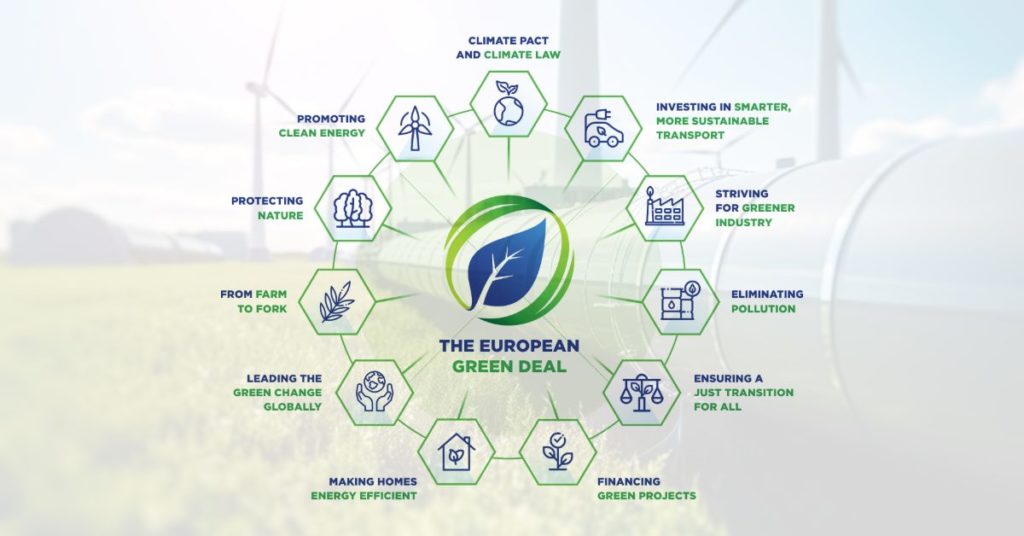The strong interdependence between climate, ecosystems, biodiversity, and human societies has been widely confirmed by the global scientific community. Anthropogenic activities, mainly through the emission of greenhouse gases, have clearly caused global warming. Floods, droughts, the rise in average temperatures, the loss of biodiversity, and the encroachment of desert areas are now increasingly frequent phenomena that are visible to everyone.
The effects of climate change and its far-reaching consequences and risks pose a global and urgent threat to all of humanity and can only be tackled with a global response that requires not only new technological tools but also new economic paradigms.
Climate crisis and circular economy: an urgent call to action
While the traditionally implemented economic model was linear and followed the “take-make-waste” approach, the new circular approach of “reduce, reuse, recycle and recover” removes waste completely from the formula and promotes a zero-waste society in which traditional fossil resources and associated greenhouse gas emissions are replaced by renewable energy.
The need to take urgent action for the climate by promoting the circular economy of resources was recognized by the European Union in 2015 through the European Green Deal program – and subsequent revisions – which aims to make Europe the first climate-neutral continent by 2050 by putting climate and energy in a strict relationship.
Ambitious targets for a sustainable future
To make this target legally binding, the European Commission has adopted European climate legislation that also sets the new and more ambitious target of reducing net greenhouse gas emissions by at least 55 % by 2030 compared to 1990 levels. Achieving this ambitious target will require a radical shift to low-carbon energy systems that utilize available renewable resources such as solar energy, wind energy, biomass, and bio-waste streams. Therefore, renewable energy is a pillar of the clean energy transition, and the new binding target for 2030 to use at least 42,5 % renewable energy is set out in the new Renewable Energy Directive (RED III). This new perspective inevitably requires major investment in research, both in terms of economic and environmental sustainability, and it requires a huge economic effort: one third of the €1,8 trillion investment from the NextGenerationEU recovery plan and the EU’s seven-year budget will be used to finance the European Green Deal.
There is no doubt that the full mobilization of the industry is necessary to achieve a circular economy with zero climate impact, and the production of renewable hydrogen has been recognized as a key means to decarbonize the sectors defined as “hard to decarbonize”. Indeed, renewable hydrogen is expected to play a key role in decarbonizing sectors where other alternatives are not feasible or more expensive, such as the fertilizer and steel industries, as well as aviation and maritime transport.
Innovation and collaboration to overcome challenges
However, current hydrogen production relies heavily on fossil fuels and there is an urgent need to develop new ways to reduce the carbon footprint and open up new uses as an energy carrier. Among the solutions emerging worldwide, water electrolysis is becoming increasingly important. Renewable hydrogen produced by electrolysis requires renewable electricity to split water into hydrogen and oxygen and is technically referred to as ‘renewable fuels of non-biological origin’. Renewable hydrogen is considered a priority in Europe as it only offers significant emission savings if it is produced from renewable energy sources.
Despite the excellent potential of such a process, there are still challenges that stand in the way of widespread application. These include the current high cost of producing hydrogen from renewables (compared to current benchmarks) and the demand for green energy production itself. To achieve the ambitious goal of replacing all hydrogen produced with more sustainable alternatives, additional solutions need to be found to complement existing ones, such as renewable hydrogen that is also produced from biogenic resources. Therefore, biomass and bio-waste streams that are locally available and whose disposal can be a critical issue, both technically and economically. This is the case with the proposed H2STEEL value chain, which aims to simultaneously enable the use of sewage sludge from wastewater treatment and bio-waste from industry, as well as the production of hydrogen with zero – even negative – CO2 emissions for the decarbonization of the steel sector, that alone is responsible for the production of around 5 % of CO2 emission in Europe.

